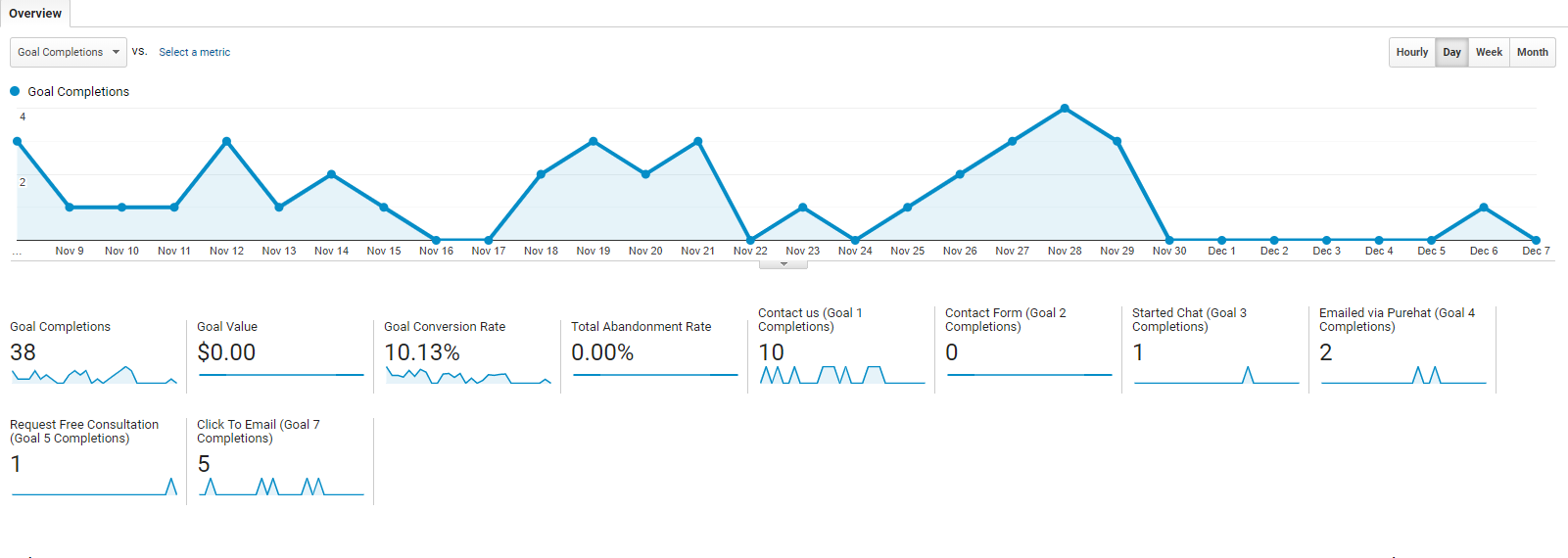How To Measure Online Advertising Performance
Measuring digital marketing performance is crucial to business success, but a huge percentage of businesses are failing to accurately track how digital ads are contributing to business goals.
One of the biggest benefits of online advertising, when compared to traditional offline marketing campaigns, is the ability to be able to obtain a huge amount of data and insights, however, for many of those who are just starting out in online advertising, it can be difficult to understand how to measure the effectiveness of your marketing strategy.
With that in mind, we bring you our guide to measuring online advertising performance.
What Is the Purpose of Your Advertising Campaign?
Before even considering which channels you wish to use, it’s vital that you consider the purpose of your advertising campaign, and the more specific the better.
For example, while your first instinct may be “we want to get more sales” it’s wise to break this down into further stages. For example, if you offer a brand new product which consumers are not yet aware of, it may be wise to invest some of your advertising budgets in growing awareness of the product first. Therefore you would be more likely to have a purpose to ‘inform’ rather than to sell at the first stage.
Before even considering which channels you wish to use, it’s vital that you consider the purpose of your advertising campaign, and the more specific the better.
For example, while your first instinct may be “we want to get more sales” it’s wise to break this down into further stages. For example, if you offer a brand new product which consumers are not yet aware of, it may be wise to invest some of your advertising budgets in growing awareness of the product first. Therefore you would be more likely to have a purpose to ‘inform’ rather than to sell at the first stage.
Additionally, sales may be a secondary result of a different type of campaign. For example, you run an informational website which drives revenue through advertising. Though of course you wish to reach more advertisers, the actual purpose of the campaign is to drive more readers to the website in order to be able to appeal better to potential advertisers.
Breaking this down even further, you want to appeal to specific advertisers – say local business services firms. In that case, the traffic you wish to drive to you site needs to match the local businesses target demographic – e.g local business owners.
Understanding the true purpose of your advertising campaign, and splitting into areas of awareness, consideration and purchase will help you to better understand your results, and also identify any weaknesses in your sales funnel.
Defining your digital advertising goals
Once you are happy that you are truly onboard with the purpose of your advertising campaign, it’s time to start defining your goals. Before worrying about how this can be measured, think about all the steps a potential customer may take and the value which it adds to your business.
For example, if you are trying to drive awareness of a cause – someone watching your video on your website or a social media channel could be classed as a goal. However, if you are a straightforward e-commerce seller than a goal is likely to be the sale of a product.
It’s vital that you also understand all of the stages which a potential customer may go through before converting to a sale. For example, are they likely to make an online enquiry and you then have a consultation. Is what you offer price sensitive? Perhaps you offer a home improvement service and need to visit their home to survey before providing a quote.
Depending on your business, there may be several steps both online and offline which a potential client must go through prior to becoming a customer, and measuring every stage will allow you to properly identify what works and where issues might lie.
Case Study Example:
The Small Biz Expert were called in to assist a client who had seen a sharp drop in appointments for the business over the previous three months. They were running advertising on Facebook, Instagram and Google Ads. Looking at the online statistics, the number of ‘conversions’ online had not dropped. They were measuring goal conversions from a potential client filling out a form on their website, and the number of forms filled in remained constant across the time that the number of appointments had dropped – so what was the issue?
Upon further investigation, we uncovered that, due to staffing issues, the time taken to reply to contact emails had increased due to staff workloads. Where previously contact had been made within the same working day when a form was submitted, this had dropped to the company responding up to three days later!
To overcome this issue we instead set up a book a call conversion – with available slots to both increase buy-in from potential customers, and make this part of the process automated for the client.
Setting Ad Goals and Conversions
Before embarking upon your “all singing all dancing” ad campaign, decide what actions will be considered your objective. If you are looking to drive awareness it may be views of a certain piece of content such as a video on your social ads or website.
For those selling products, this could be fairly simple – sell x amount of products, or increase average order value.
Depending on your niche, it’s vital that you then consider all of the ways in which your customers could take this action.
Let’s say that you run an accountancy business and are setting up an advertising campaign whose overarching goal is to get potential clients to book a free consultation. You have a landing page set up specifically for this campaign – it offers both a form to fill in and also includes your contact number. You are running ads on LinkedIn and Google targeting local businesses. Your Google ads include a phone number extension. Your LinkedIn ads are sponsored InMail ads – which send a message with a clear CTA to go to the landing page. So many ways that a potential customer could convert – so you need to be clear on what you are measuring, and what this means to you.
Take an example from our very own Google analytics. As a service based business, we have several ways in which a person may contact us - so we have conversions based on enquiries - so people may use several of our contact forms, start a live chat, email us, or request a free consultation.
Understanding the Value of a Conversion
So you now know what you’re measuring, but what value does each ‘conversion’ have to your business? Obviously, this can be super clear (for example – you sell x product at x price with a margin of x), or more ambiguous. For example, what is a “video view” worth to you?
Take time to consider the value of each step a potential customer takes throughout their journey with you, and bear in mind that not all of these steps will take place on your own website. It may be elsewhere such as on your social media page or on a review site.
Not sure what a good conversion rate is for your business? Check out this fab infographic from Wordstream.
Enquiries vs Conversions
If you run an e-commerce business, conversion tracking is super straightforward. Someone comes onto your website, buys a product – job done. However, for those in sectors where additional steps are required, tracking your success isn’t quite as straightforward.
What if you run a campaign that gets lots of enquiries, but no one is actually buying. Setting a baseline of enquiries to actual sales before starting your advertising campaign is a must.
Tracking Performance
While there are wealth of tools that can be used to track the performance of your online ad campaigns, Google Analytics is still one of the best ways of measuring everything that actually happens on your website.
Whether you are creating a sales funnel through content marketing, or running a pure e-commerce campaign, google analytics allows you to really dig deep into how your potential customers interact with your website.




